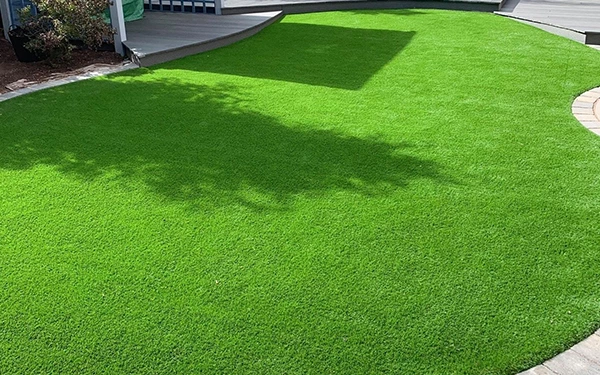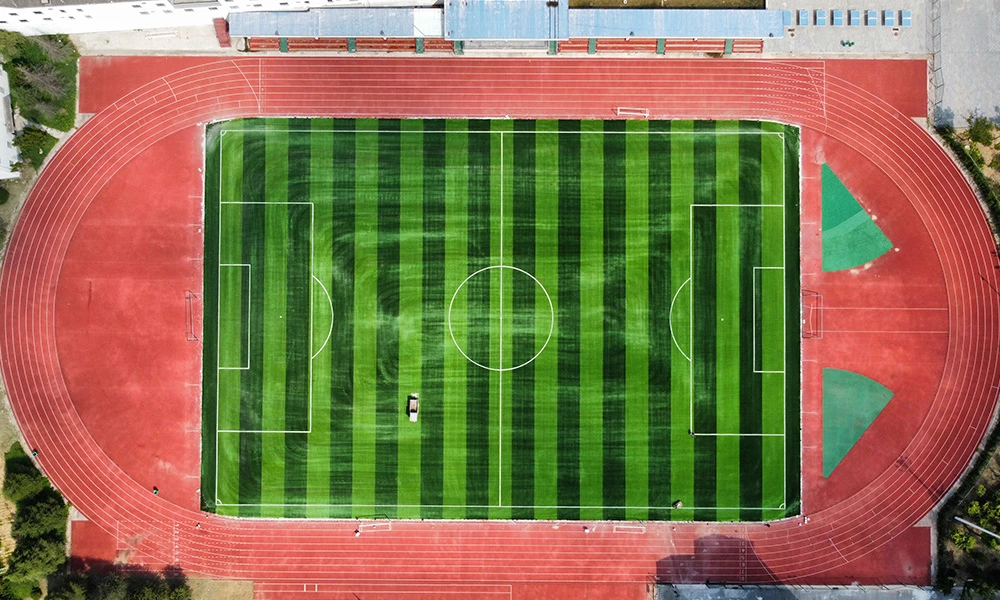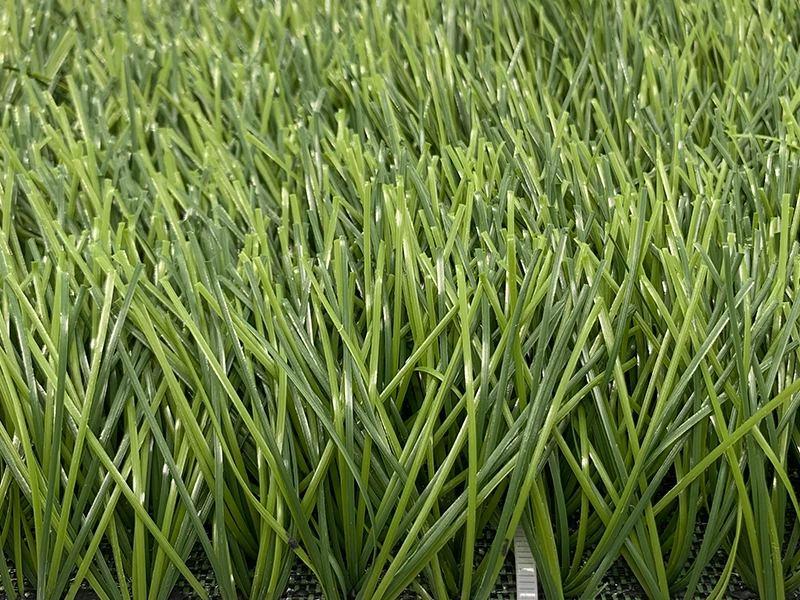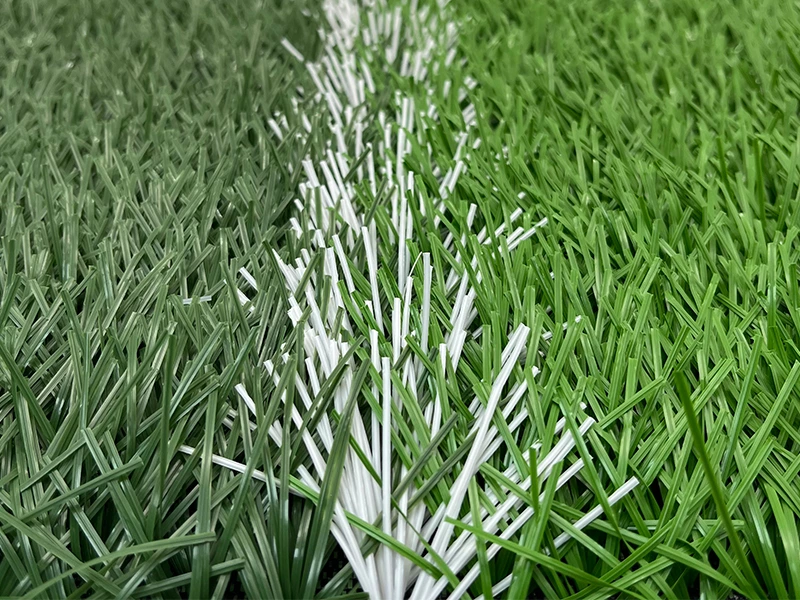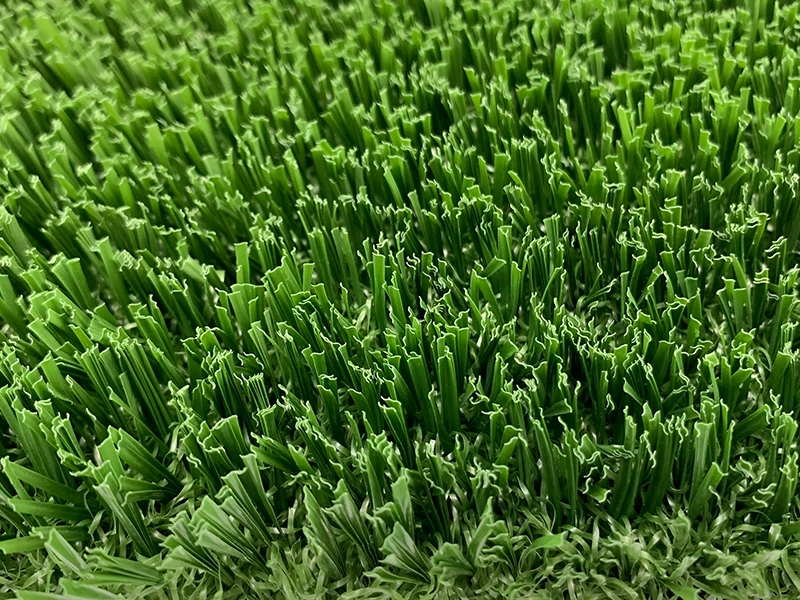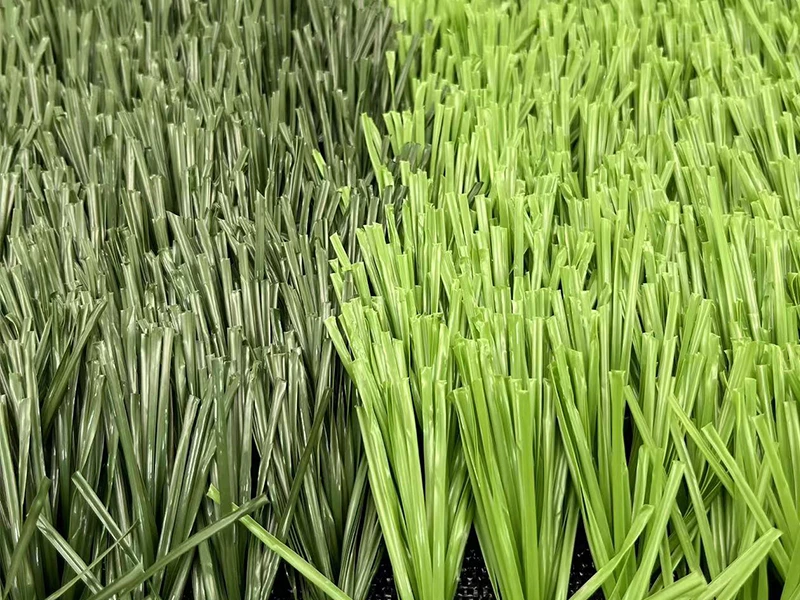What thickness of artificial grass is best?
Choose the best thickness for different purposes
The thickness of artificial turf directly affects its comfort, durability and visual effect. Whether it is used in stadiums, landscape decoration or home courtyards, a reasonable thickness can ensure the best use experience. Too thin artificial turf may lack cushioning effect, while too thick turf may affect sports performance and increase costs and maintenance difficulties. Therefore, when choosing artificial turf, it is necessary to comprehensively consider the purpose of the venue, budget and usage requirements to find the most suitable thickness.
Artificial turf for stadiums-durability and sports performance
For high-intensity sports venues such as football fields and rugby fields, the thickness of artificial turf is usually selected between 30mm-50mm. This thickness can provide good cushioning performance, reduce the risk of injury when athletes fall, and ensure the bounce and rolling effect of the ball. For example:
Football field
The recommended thickness is 40mm-50mm, high-density grass fibers enhance wear resistance, and can be filled with quartz sand and rubber particles to improve shock absorption.
Golf course greens
usually use 12mm-15mm high-density short grass to ensure smooth rolling of the putter ball.
Tennis courts and multi-purpose sports fields
suitable for 18mm-30mm thickness, providing moderate elasticity and friction.
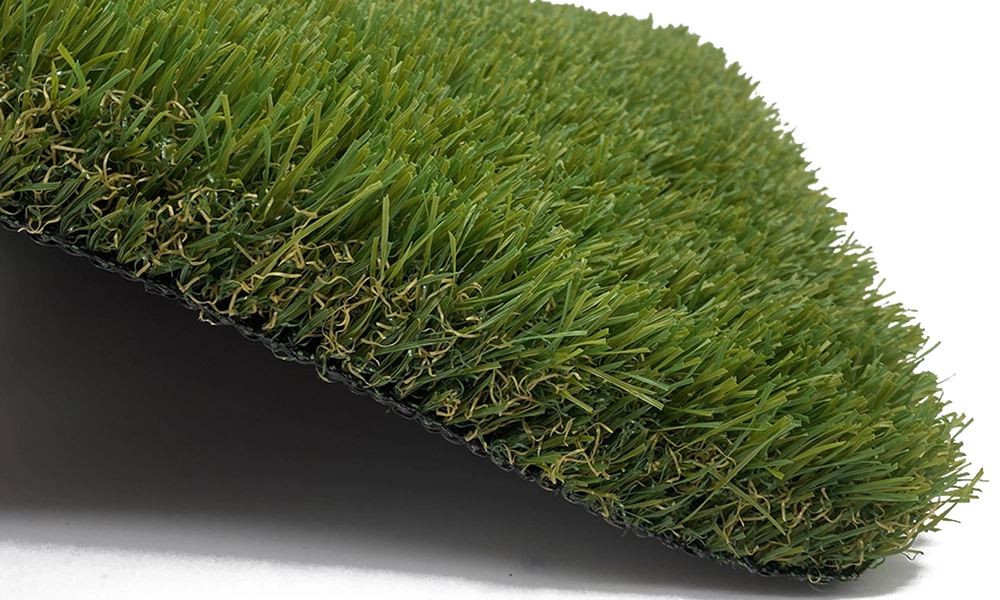
Artificial turf for landscape decoration - both beauty and naturalness
Artificial turf used in gardens, courtyards, roof terraces, commercial landscapes and other environments mainly emphasizes beauty and comfort, and generally chooses a thickness of 20mm-40mm:
20mm-30mm: suitable for lightweight landscapes such as balconies, courtyards, rooftop greening, etc., easy to clean and maintain.
35mm-40mm: closer to natural lawns, suitable for gardens, parks and other areas, providing a softer foot feel and natural visual effects.
For landscape lawns, in addition to thickness, grass density and color matching should also be considered to enhance simulation and overall appearance.
Indoor carpet-style artificial turf - soft and comfortable, suitable for home and commercial places
In gyms, children's play areas, exhibition venues or pet areas, artificial turf should not only be durable, but also have a certain cushioning effect. The recommended thickness is 10mm-30mm:
10mm-20mm: suitable for indoor decoration and exhibition carpets, easy to clean, and provide basic cushioning effect.
25mm-30mm: suitable for gyms and children's play areas, increase comfort and reduce injuries when falling.
If used in pet activity areas, it is recommended to choose high-density wear-resistant materials and match them with appropriate drainage design to clean up pet excrement.
Other factors affecting the selection of artificial turf thickness
In addition to thickness, there are several key factors that affect the performance of artificial turf:
Material type: PE (polyethylene) is softer and suitable for landscape and football fields; PP (polypropylene) is harder and suitable for golf greens and tennis courts.
Density and grass length: High-density lawns are more durable, and the length of grass determines the foot feel and visual effect.
Filler: For sports fields, rubber particles or quartz sand are usually added to improve shock absorption and anti-slip properties.
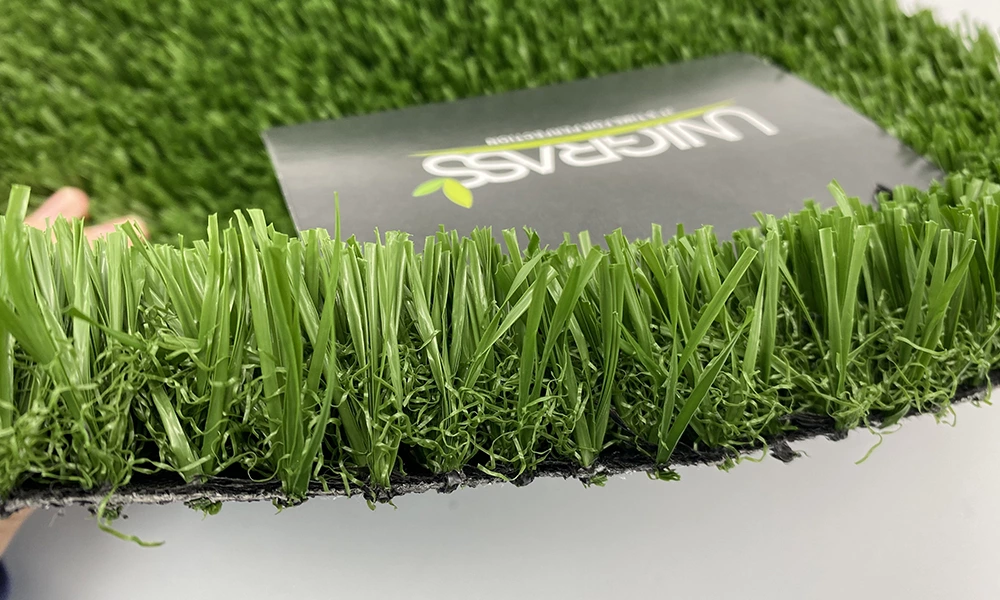
How to choose the most suitable thickness of artificial turf?
When choosing the thickness of artificial turf, the following factors should be considered comprehensively:
Purpose of the venue
Choose thicker turf for sports fields, medium thickness for landscape decoration, and thinner turf for indoor use.
Frequency of use
High-traffic areas require more wear-resistant thick turf, and low-frequency use areas can choose thinner ones.
Budget range
Thicker turf costs more, and the installation and maintenance costs are also higher.
Visual and tactile needs
If you want a touch closer to natural turf, it is recommended to choose a thickness of more than 35mm.
Find the best thickness to ensure the best use experience
Artificial turf for different purposes has different requirements for thickness. The following is a summary of recommended thickness:
Football field: 40mm-50mm, durable and shock-absorbing.
Golf course green: 12mm-15mm, high-density short grass to ensure ball speed.
Courtyard and park: 30mm-40mm, high simulation, comfortable and natural.
Balcony and roof greening: 20mm-30mm, light and easy to maintain.
Gym and children's play area: 25mm-30mm, with buffer protection.
Comprehensively consider the use needs, budget and maintenance costs, and choose the appropriate thickness to ensure that artificial turf can play the best effect in various environments and bring users a comfortable, durable and beautiful experience.
